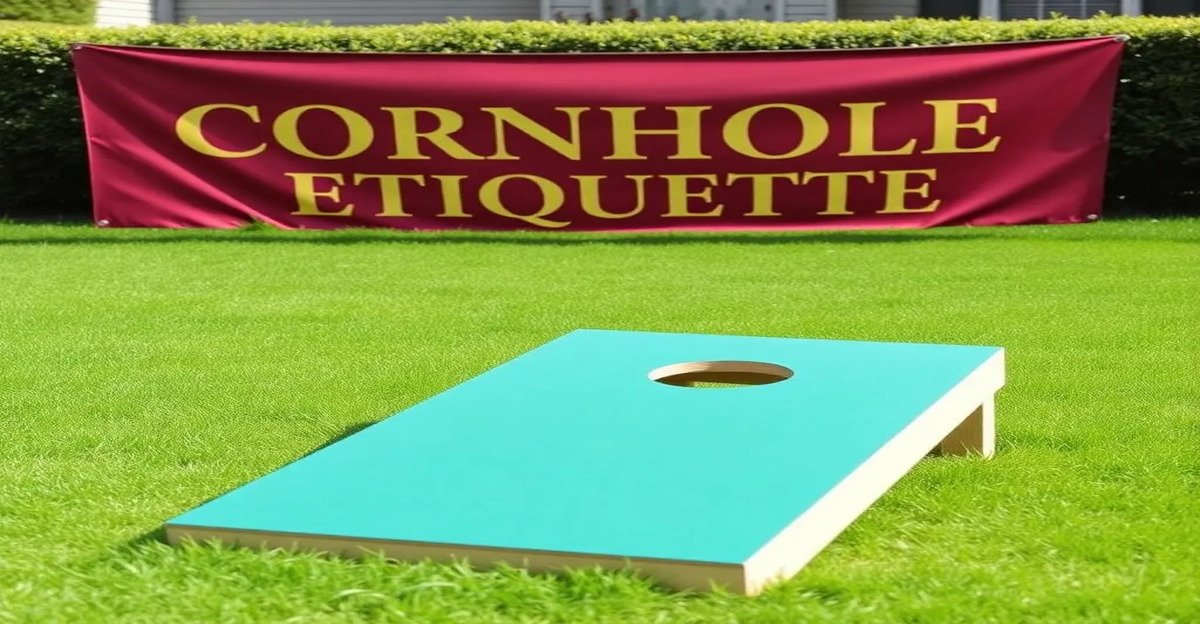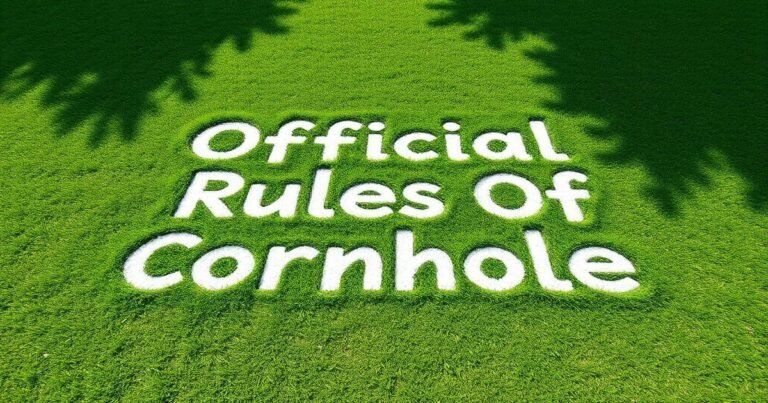Cornhole Etiquette: The Essential Guide
Cornhole is more than just a fun backyard game; it’s a social activity that brings friends and family together. However, to truly enjoy the game and ensure everyone has a good time, understanding cornhole etiquette is crucial. This article will delve into the rules of cornhole, the importance of good sportsmanship, and how to create an enjoyable environment for all players. Whether you’re a seasoned player or new to the game, this guide will help you navigate the nuances of cornhole etiquette.
Why is Cornhole Etiquette Important?
Cornhole etiquette is vital for maintaining a positive atmosphere during the game. Good etiquette ensures that all players feel respected and valued, which enhances the overall experience. When players adhere to proper etiquette, it fosters a sense of camaraderie and sportsmanship, making the game more enjoyable for everyone involved.
Moreover, understanding cornhole etiquette can help prevent conflicts and misunderstandings during play. By following established guidelines, players can focus on having fun rather than worrying about potential disputes. This article will cover the essential rules of cornhole etiquette to help you navigate your next game with confidence.
What are the Basic Rules of Cornhole?
The rules of cornhole are straightforward, but they are essential for fair play. Here are some of the basic rules to keep in mind:
- Setup: Cornhole is played with two boards placed 27 feet apart. Each player or team has four bags to throw.
- Turn Order: Players take turns throwing their bags, with the player who scored in the previous round going first.
- Scoring: A bag that lands in the hole scores 3 points, while a bag on the board scores 1 point. The player or team with the highest score at the end of the game wins, typically played to 21 points.
- Fouls: If a player steps over the foul line while throwing, the bag is considered a foul and does not count.
Understanding these basic rules is crucial for anyone looking to play cornhole. They provide a foundation for fair competition and help maintain the integrity of the game.
How to Score in Cornhole: Understanding Points
Scoring in cornhole is one of the most exciting aspects of the game. Here’s how it works:
- Points System: As mentioned, a bag that lands in the hole scores 3 points, while a bag that remains on the board scores 1 point.
- Cancellation Scoring: In cornhole, points are calculated using a cancellation system. This means that if both players score in a round, their points cancel each other out. For example, if Player A scores 5 points and Player B scores 3 points, Player A would receive 2 points for that round.
- Winning the Game: The first player or team to reach 21 points wins the game. However, players must win by at least 2 points, so if a player reaches 21 but their opponent has 20, the game continues until one player achieves a 2-point lead.
Understanding how to score effectively can significantly impact your strategy and overall success in the game.
What is Good Sportsmanship in Cornhole?
Good sportsmanship is a cornerstone of cornhole etiquette. It involves treating your fellow players with respect and kindness, regardless of the outcome of the game. Here are some key aspects of good sportsmanship in cornhole:
- Encouragement: Always encourage your opponent, especially if they make a great shot. A simple “nice throw” can go a long way in fostering a positive atmosphere.
- Respect: Avoid heckling or distracting your opponent during their throw. Cornhole is a social game meant to be enjoyable for everyone involved.
- Accepting Outcomes: Whether you win or lose, maintain a positive attitude. Congratulate the winning team and be gracious in defeat.
How to Respect Your Opponent During Play
Respecting your opponent is crucial in cornhole. This means:
- Maintaining Focus: Avoid intentional distractions or disruptive behavior while your opponent is throwing.
- Personal Space: Give your opponent adequate space and time to prepare and throw their bags.
- Fair Play: Never intentionally interfere with your opponent’s bags or attempt to manipulate the game unfairly.
Respect goes beyond just following the rules – it’s about creating a positive, enjoyable environment for everyone playing cornhole.
What Should You Do if You’re New to Cornhole?
For new players, cornhole can seem intimidating. Here are some tips:
- Learn the Basics: Watch experienced players and ask for guidance.
- Practice: Spend time practicing your throw and understanding the board’s dynamics.
- Be Open to Advice: Experienced players are often happy to share tips and help new players improve.
Remember, everyone starts as a beginner. Don’t be afraid to ask questions and learn from more experienced players.
How to Keep the Game Fun and Enjoyable
Cornhole is ultimately about having a good time. Here are some ways to ensure everyone enjoys the game:
- Keep it Casual: Unless it’s a formal tournament, focus on fun rather than intense competition.
- Mix Up Teams: Rotate players and create new team combinations to keep things interesting.
- Bring Refreshments: A cooler of drinks can make the game more enjoyable, especially during backyard gatherings.
What Equipment Do You Need for Cornhole?
To play cornhole, you’ll need:
- Two cornhole boards
- Eight bags (four for each team, typically in different colors)
- A flat, open area to set up the boards
- Optional: Measuring tape to ensure proper board placement
Invest in quality equipment to ensure a better playing experience and longer-lasting game setup.
How to Handle Distractions and Maintain Focus
Distractions are common in cornhole, especially during casual games. Here’s how to handle them:
- Stay Calm: If something is distracting you, politely ask for it to be addressed.
- Communicate: Talk with your fellow players about maintaining a focused environment.
- Practice Concentration: Learn to block out minor distractions and focus on your throw.
Key Things to Remember About Cornhole Etiquette
- Respect your opponents and fellow players
- Follow the basic rules of the game
- Maintain a positive, encouraging attitude
- Focus on having fun
- Practice good sportsmanship
- Be patient with new players
- Communicate clearly and kindly
- Keep the game environment friendly and welcoming
- Learn from each game and enjoy the experience
Cornhole is more than just a game – it’s an opportunity to connect with friends, family, and fellow enthusiasts. By following these etiquette guidelines, you’ll ensure that every cornhole session is enjoyable, respectful, and memorable.
Whether you’re playing in a backyard, at a barbecue, or in a competitive tournament, these principles of cornhole etiquette will help you become a better player and a more respected member of the cornhole community. So grab your bags, set up your boards, and get ready to have a great time.






